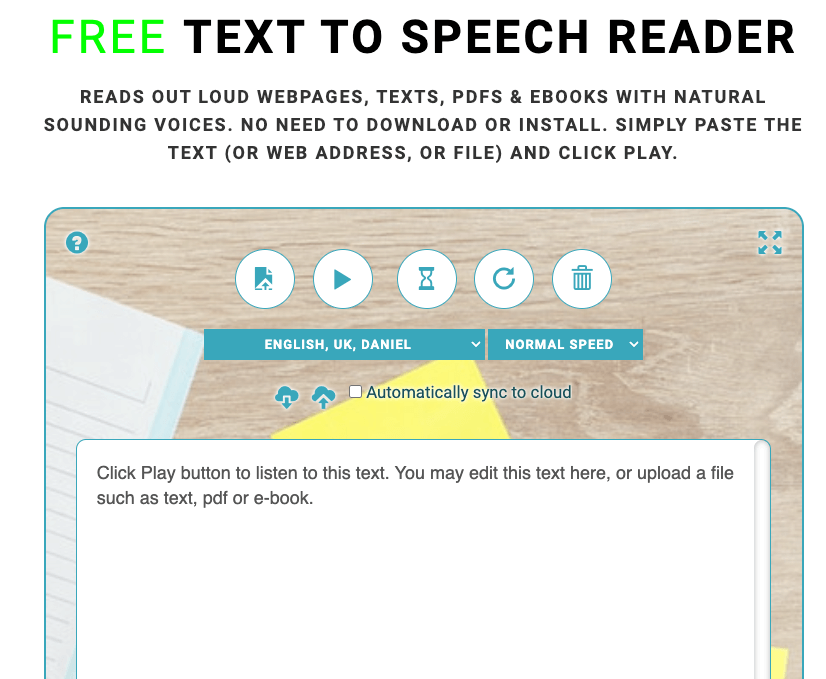Content marketing is an important part of any marketing strategy. But creating killer content takes time and effort. This guide will show you how to create content that people actually want. And how to create it in less time and for less money. Here are 7 tips for your own content strategy.
AFFILIATE DISCLAIMER: I SOMETIMES LINK TO PRODUCTS AND SERVICES TO HELP COVER THE COSTS OF RUNNING THIS BLOG. THERE’S NO EXTRA COST TO YOU – AND I ONLY RECOMMEND PRODUCTS THAT I’VE BOTH USED PERSONALLY AND THINK ARE QUALITY PRODUCTS THAT HELP WITH EFFICIENCY. PLEASE READ MY AFFILIATE DISCLOSURE FOR MORE INFORMATION. THANKS FOR YOUR SUPPORT!
Table of Contents
- 1. Perform Better Keyword Research
- 2. SEO Sprints for Creating Killer Content
- 3. Market Research and a Conversational Tone
- 4. Tools to Manage Your Content Creation Workflow
- 5. Time Boxing for a Better Content Workflow
- 6. Batching Your Work for Faster Content Creation
- 7. Brain Dump for Content Ideas
1. Perform Better Keyword Research
Creating content for the user first will make sure your content is both relevant and useful to the consumer. This also means you’re following Google’s new algorithm update, the Helpful Content Update.
But without quality keyword research, or really key topic research, your content won’t be seen.
According to Ahrefs, “90.63% of content gets no traffic from Google.” That’s a lot of content that never sees any organic traffic from Google.
To ensure the content you’re creating isn’t a waste of your time, make sure you’re doing proper keyword research.

There are 4 main areas to look at:
- Search volume – how many people are searching for that keyword or phrase monthly. You can find this number using KeySearch, SEMrush, Ahrefs, Keywords Everywhere (Chrome Extension), or Moz.
- SEO Difficulty – Each keyword or phrase is graded on how hard it would be to rank for. The score is a number from zero to 100, with 100 being the hardest to rank. If you’re a newer website, shoot for a number that’s 50 or lower. Anything higher than that will be much harder to rank for. That doesn’t mean you can’t rank, but you would want to have a higher domain authority to do so. If you’re a brand new site, I would go even lower. Anything 25 and lower would be good to start with. You can view the score of each keyword or phrase using any keyword research tool that you like. I use KeySearch. If you don’t have one you use currently, you can try out KeySearch and save 20%.
- Trends – You don’t want to try ranking for a keyword that is on the way out. You want to make sure the keywords you’re trying to rank for are trending and will continue to trend upward. Google Trends is a great, free resource to check if a phrase is trending month over month. You can also find this using any keyword research tool of your choice.
- Cost Per Click (CPC) – You don’t have to be using paid advertising to use CPC as a metric to track. The higher the cost per click, the higher the dollar amount that paid ad users are willing to spend. I think it’s safe to say the higher they’re willing to spend, the better the key phrase converts. Think about it, if people are willing to spend a higher dollar amount for a keyword, it must be converting well. So you actually want this number to be higher.
When you look at all four of these numbers, you’ll get a better overall picture of what’s working. Words or phrases that show higher search volumes monthly, are trending, have an SEO difficulty that’s attainable (usually around 50 or below), and have a higher CPC are the ones you really want to target.
2. SEO Sprints for Creating Killer Content

How often will you be publishing content online?
The old way of creating content required you to identify the frequency that you’ll publish content each week. And even pick a specific day to consistently publish. Honestly, it’s a little outdated.
I like to work in SEO sprints. I create a batch of blog posts all centered around one topic. So for example, this blog post is in a topic cluster for content creation. I’ve created multiple blog posts that are all related to content creation. I get them all written and optimized with the right keywords and phrases, then I publish them. I don’t wait to distribute them slowly.
You can create a years worth of content in just 12 weeks. Then wait for the results.
You’ll get a lot more traffic in a much shorter period of time by doing an SEO sprint compared to the old way of blogging with just one blog post per week or even just three blog posts per month. The old way of blogging will get you results, but it’ll be much slower and put you nearly a year behind someone doing SEO sprints.
Just get the content out there, so Google and your audience can view it. You can always go back and edit your content later to make it better quality. And to add more keywords that you might be able to rank for. This is how you create killer content at scale without fewer frustrations.
Unless it’s 100% AI created content, it won’t hurt your website to get this content published quickly and edit later to make it even better. Think 80%. If your content is 80% good to go, then hit publish. Done is better than perfect.
3. Market Research and a Conversational Tone
You can steal my ideas from a recent blog post where I talk about how to do voice of customer research without the long drawn out process of customer surveys.
This is especially useful if you’re just starting out and don’t have an audience or you have a very small audience. The article shows you 4 Ways to Get Inside Your Target Audience’s Mind.
Be sure your content is written in a conversational tone. What does that mean? When it comes to grammar, basically throw out the rulebook. Seriously. You want to use contractions, so you don’t sound like a robot. Here’s an example:
“Create content that will wow your audience.” It sounds robotic.
Instead, try “Create content that’ll wow your audience.”
Much better. When in doubt, write like you speak.
And read it out loud to see if it sounds like an actual conversation you would have.
Another way to sound conversational is to mix up long and short sentences. You’ll notice the paragraph above has five sentences. A few of them are just short sentence fragments. They really aren’t grammatically correct, but they help change the rhythm as you read.
A fun tool to see how your writing sounds. And to make sure you sound conversational is TTSReader. It’s a free text to speech reader. No download. Just simply copy, paste, and click play.

4. Tools to Manage Your Content Creation Workflow
Content has to be created, edited, distributed, tracked, and managed. Managing your content workflow means having tools in place to keep track of your content at every stage of the content creation process.
You’ll also want tools to automate as much of the content process as possible. You can use free or paid tools, so there are options for every budget.
The tools I recommend are:
- AI Writing Tools – There are so many options for Ai writing tools now. But here are my favorites: ChatGPT, Frase.io, Copy.ai, ByWord.ai,
Which is my favorite? It really depends what I’m working on. ByWord.ai is great for full-length blog posts and batching articles for pillar pages. Frase.io is great for blog posts and out ranking other articles. Copy.ai has recently had a complete overhaul of their offerings, so they now have anything and everything you could need with an Ai Writing Tool: email sequences, blog posts, meta descriptions, Instagram captions, the list goes on and on. And of course, ChatGPT is great to use. All of these options offer free and paid versions. Choose what you like best and what fits your budget. - Notion – I love using Notion to find writing styles and templates that I like. I can copy them into Notion and create templates to use in the future. You aren’t copying someone’s post word for word. Rather you’re using their writing style to create your own template. I also use Notion to get my thoughts out of my head and onto my screen. You can switch between the mobile app and desktop seamlessly.
- Otter.ai– The absolute best tool on this list! I use Otter to transcribe my voice notes, so I can create my blog posts as fast as possible. Sometimes the thoughts are coming faster than I can type. I just speak into the Otter app and it’ll transcribe everything for me. It’s much more accurate than other voice notes that I’ve used, and you get up to 600 minutes free per month.
- Trello or Asana – Track your content from the research phase to finally hitting that publish button using Trello or Asana. Both offer free plans to get you started, and honestly the free plan is probably all you’ll need. You can create from their pre-made templates. I recommend Trello’s Blog Template.
- SEMrush or Keysearch – Keyword research, check for backlinks, compare your website authority and ranking to your competitors. Even do a site audit. The free version of SEMrush is great to get you started. As you get further along in your keyword research, you’ll want to find a Search Engine Optimization tool that will give you more information. I recommend trying a paid version of SEMrush or Keysearch. SEMrush offers more, but takes longer to learn and is more expensive. Keysearch is easy to learn, much cheaper option (plus save another 20% when you use my link), but it doesn’t offer as much as SEMrush.
- Tailwind– The best scheduling tool for Pinterest, but it isn’t just for Pinterest. Use Tailwind to schedule to Instagram too. It makes it easy to create reels and idea pins. Simply make your short video, and add it to Tailwind, so you can schedule your video to Instagram and Pinterest with the click of a button.
- ConvertKit – When it comes to content, don’t forget about your email list. This is the only platform for your content that you own. Make the content that you send to your email list the best that you have. Check out ConverKit’s free plan to you get you started growing your list.
Now, you don’t need all of these. But I’ve tried each one of these and found the ease of use, quality of the product, and time-saved to be well worth the investment.
Ultimately, your workflow will depend on the type of content you’re creating, and how you like to work. There isn’t a cookie cutter solution to content creation.
You can learn from others and find inspiration in what they do to create content in a better, faster way, but you have to create your own workflow that works for you and your business.

If you need help figuring out what that workflow should look like, book a strategy session with me. I would love to help you create a workflow that fits into your life, so you don’t feel like everything revolves around work.
I offer 1:1 strategy sessions via Zoom and Voxer. You can learn more about both options on my Work with Me page. Because you deserve to have a more streamlined process of promoting your business with less stress and less hustle. Make some room in your schedule to breathe and enjoy your business again. If your process isn’t sustainable for a few weeks, how do you expect to keep up with it for a year?
Your content should work harder for you, so you don’t have to.
5. Time Boxing for a Better Content Workflow
I feel like the effectiveness of time boxing can be different for everyone, so take this one with a grain of salt. But for me, it takes my productivity levels to new heights.
Time boxing is like time blocking, where I block off a set time for one task. For example, I write all of my blog posts on Tuesdays. Those are my days to write, so I know what I’m doing that day. I just sit down and start creating as many blog posts as I can.
My topic research and keyword research are both done ahead of time, so I can just start creating.

Now, here’s where the difference comes between time boxing and time blocking. Time blocking is setting time to do one task. Time boxing is actually limiting that time. I start creating, but once I reach the end of that time block, my time is up and I have to move one.
By limiting my time, this keeps me from spending too much time on one article. I know I tend to be a perfectionist, so I limit my time.
Done is always better than perfect, and because I try to make things more perfect than most it’s smart for me to limit my time. It keeps me on track and more productive throughout the week.
6. Batching Your Work for Faster Content Creation
I’m also batching my work during these time boxes. Working on the same types of projects all at once gets me in a groove where I just keep going. Not only that, but my speed, quality, and just overall effectiveness increases.
Each time you switch between tasks, you’re losing time. It seems like just a few minutes, but when you track how long it takes to switch tasks both physically and mentally, you’ll see just how much time is being wasted each day.
By blocking off time to do certain tasks, or a batch of tasks, you’re gaining hours back each week. For me personally, I’ve gained an extra 8 hours. That’s a full day of work that I’ve saved just by blocking off set times to do my batch work. Hello four-day work week!
7. Brain Dump for Content Ideas
A lot of times as entrepreneurs, we have so many ideas floating around in our head. It’s hard to really focus when you’re thinking about 50 different things at once.
Brain dumps are the way to get those new ideas out of your head and down on paper, so you can focus.
Most of my ideas come at random times throughout the day.
For example, a lot of my ideas come when I’m in the shower, making supper, or even in the middle of the night.
I use voice memos, the notes app, or Otter.ai for getting these ideas filed in a way that I can work with. Otter is a great tool to use speech to text transcription. You can literally create a first draft for a blog post in the school pick up line. Believe me. I’ve done it.
I also like to do a brain dump anytime I’m working and can’t focus. Just five minutes is all it takes, but it can boost your productivity so much.

If you’re a pen and paper person, jot down everything you can in those five minutes. If you’re like me, use Otter and get the ideas out of your head and transcribed all at once. Then you simply take the text from otter and copy it over to your blog or social media post. It’s quick, easy, and so, so efficient.
Follow these seven tips to create killer content that converts in a better, faster way. Create your workflow to go from research to writing and finally publishing with a more streamlined process. Automate the process as much as possible, and find tools that fit your style of work, so you don’t have to work so hard to create your content. And make sure you’re getting your content in front of the right people with proper keyword research. Don’t let your ideas be part of the 90.63% of content that never gets traffic from Google. And if you need help creating your workflow or your strategy, reach out to me.




+ show Comments
- Hide Comments
add a comment